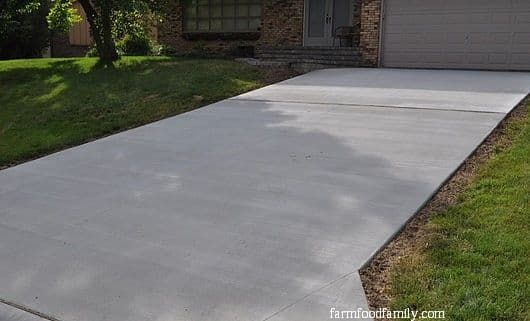Concrete is a widely used material in driveways, patios, sidewalks, and floors due to its durability and longevity. However, over time, exposure to weather elements, heavy foot traffic, and daily wear and tear can cause cracks, discoloration, and surface damage. When faced with deteriorating concrete, homeowners and property managers often struggle with the decision between resurfacing and full replacement.
Both options have their pros and cons, and choosing the right one depends on factors such as cost, extent of damage, longevity, and aesthetic considerations. In this article, we’ll explore the differences between concrete resurfacing and replacement and help determine whether repair is worth it.
Understanding Concrete Resurfacing
Concrete resurfacing is a process that involves applying a new layer of cement-based material over the existing concrete surface to restore its appearance and functionality. Instead of tearing out the old concrete, a thin layer of a polymer-modified overlay is spread over the surface, effectively covering cracks, discoloration, and minor imperfections.
Benefits of Concrete Resurfacing
- Cost-Effective – Resurfacing costs significantly less than full replacement because it requires fewer materials and less labor.
- Time-Saving – The process can be completed in a few days, whereas replacement can take weeks.
- Aesthetic Enhancement – Available in a variety of colors, patterns, and textures, resurfacing allows homeowners to customize the look of their concrete.
- Eco-Friendly – Resurfacing prevents unnecessary concrete waste from ending up in landfills.
- Extended Lifespan – A properly resurfaced concrete surface can last for years, adding strength and durability to the existing slab.
When Is Concrete Resurfacing a Good Option?
Resurfacing is an excellent choice if:
- The surface has minor cracks or cosmetic damage but remains structurally sound.
- The concrete is slightly uneven but does not have deep-set foundational issues.
- You want to upgrade the look of your driveway, patio, or walkway without a full replacement.
Understanding Concrete Replacement
Concrete replacement involves removing the old, damaged concrete and pouring a new slab in its place. This option is usually necessary when the existing concrete is beyond repair.
Benefits of Concrete Replacement
- Structural Integrity – Replacement is the best option for deeply cracked, severely damaged, or unstable concrete.
- Long-Term Solution – A new concrete slab will last for decades with proper maintenance.
- Stronger Load-Bearing Capacity – New concrete provides a solid foundation capable of handling heavy loads.
- Eliminates Underlying Problems – If there are foundational issues, soil shifts, or drainage problems, replacement ensures these are addressed.
When Is Concrete Replacement Necessary?
Consider full replacement if:
- The concrete has deep cracks, significant sinking, or heaving.
- The damage extends through the full depth of the slab.
- There are ongoing structural or drainage issues causing the damage.
- Previous repair attempts have failed.
Cost Comparison: Resurfacing vs. Replacement
One of the biggest factors in deciding between resurfacing and replacement is cost. On average:
- Concrete Resurfacing costs between $3 to $10 per square foot, depending on the complexity of design and materials used.
- Concrete Replacement costs between $8 to $20 per square foot, which includes demolition, material costs, labor, and disposal of old concrete.
If the damage is minimal and limited to the surface, resurfacing is a budget-friendly option. However, if the structural integrity is compromised, replacement is the wiser investment in the long run.
Durability and Longevity
- Concrete resurfacing typically lasts 10-15 years with proper maintenance, but it depends on environmental exposure and daily use.
- Concrete replacement can last 25-50 years when properly installed and maintained.
If your concrete is in relatively good shape, resurfacing can extend its life for another decade. But if the concrete is severely deteriorated, replacement is the best long-term solution.
Maintenance Considerations
Both resurfaced and replaced concrete require maintenance to remain in good condition:
- Resurfaced Concrete: Requires regular sealing to protect against moisture and stains.
- Replaced Concrete: Also benefits from sealing, but it is generally more resistant to deep cracks and long-term damage.
Regular cleaning, avoiding heavy loads, and fixing minor issues promptly can help prolong the life of either resurfaced or new concrete.
Environmental Impact
- Concrete Resurfacing is a more environmentally friendly choice because it reduces waste and the need for new materials.
- Concrete Replacement generates more waste and requires significant resources, but it provides a fresh, long-lasting solution.
If sustainability is a priority, resurfacing is the greener alternative.
Conclusion: Is Repair Worth It?
The decision between concrete resurfacing and replacement depends on the extent of the damage, budget, and long-term goals. If your concrete is structurally sound with only minor cosmetic issues, resurfacing is a cost-effective and efficient solution. However, if the concrete is severely cracked, sinking, or structurally compromised, full replacement is necessary to prevent further problems.
For homeowners looking for a balance between affordability and durability, consulting a professional concrete contractor can help determine the best course of action. Making the right choice will ensure the longevity and functionality of your concrete surfaces for years to come.

